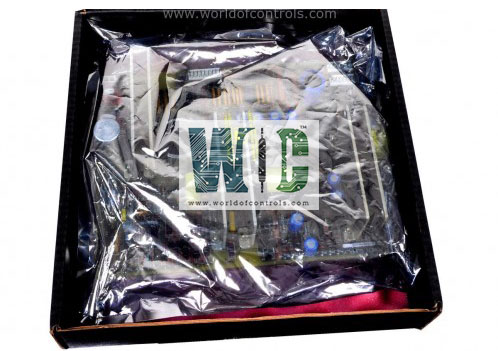SPECIFICATIONS
Part No.: IS230TICIH3A
Manufacturer: General Electric
Country of Manufacture: United States of America (USA)
Temperature: -30 to +65oC
Product Type: Isolated Input Assembly Board
Availability: In Stock
Series: Mark VIe
Functional Description
IS230TICIH3A is an Isolated Input Assembly Board developed by GE. It is a part of the Mark VIe control system. The board functions in acquiring isolated digital input signals from field devices and interfacing them with the control system via I/O packs.
Features
- 24 Isolated Digital Input Channels: The TICI board (Isolated Digital Input Terminal Board) features 24 isolated voltage detection circuits, each designed to monitor discrete field signals such as those from relay contacts, switches, and fuses. The isolation ensures reliable signal acquisition without interference from ground loops or electrical noise.
- Integration with PDIA I/O Packs: The board is designed to interface with PDIA I/O packs, which are plugged directly into the board. Depending on the system configuration, one, two, or three PDIA packs can be connected to support simplex, dual, or triple modular redundancy (TMR) systems within the Mark VIe framework.
Installation and Wiring
- The board includes two I/O terminal blocks, each supporting up to 12 AWG wiring. These terminal blocks are removable, secured by two screws each, allowing for easy maintenance and replacement. Each block consists of 24 terminals, enabling direct connection of field input signals.
- To ensure electrical noise immunity, shield terminal strips are provided to the left of each terminal block. These are directly connected to chassis ground, enhancing the board’s electromagnetic compatibility (EMC).
Cabling and System Connections
- In simplex (non-redundant) configurations, only connector JR1 is utilized. In TMR (Triple Modular Redundant) systems, all three connectors (JR1, JR2, JR3) are engaged, enabling high-reliability signal acquisition and system fault tolerance.
- Compatible with Mark VI and Mark VIe configurations, offering scalability and adaptability to different redundancy and performance requirements.
Diagnostics
- Excitation Voltage Monitoring: The board continuously monitors its excitation voltage. If the voltage drops below 40% of the nominal value, a diagnostic alarm is triggered and latched by the I/O pack to indicate a potential power issue.
- Input Channel Testing: As part of routine diagnostics, the I/O pack forces all input channels on the terminal board into an open contact (fail-safe) state. If any input fails to respond correctly, it is automatically forced into the fail-safe state, and a fault is registered.
- TMR Input Validation: In Triple Modular Redundant (TMR) configurations, the input signals from all three terminal boards are compared. If the input from this board does not match the majority-voted value, a fault is raised, indicating a possible discrepancy or failure.
- Connector Identification and Compatibility Check: Each connector on the terminal board (JR1, JS1, JT1) is equipped with a unique ID device. This read-only chip stores critical information such as the board serial number, board type, revision level, and connector location. The I/O pack interrogates this chip during system initialization. If there is a mismatch or an unrecognized ID, the system flags a hardware incompatibility fault to prevent improper configuration.
The WOC team is always available to help you with your Mark VIe requirements. For more information, please contact WOC.
Frequently Asked Questions
What is IS230TICIH3A?
It is an Isolated Input Assembly Board developed by GE under the Mark VIe series.
How many input channels does it support?
It supports 24 isolated digital input channels, each capable of sensing voltage changes from field equipment.
Can the board be used in redundant systems?
Yes. It supports Simplex, Dual, and Triple Modular Redundant (TMR) configurations by using one, two, or three PDIA I/O packs, respectively.
How are field wires connected?
The 24 digital inputs are connected via two removable terminal blocks, each with 24 terminals that accept up to 12 AWG wires.
